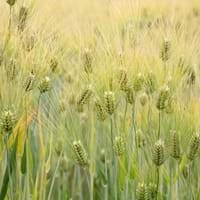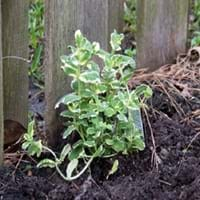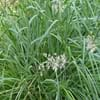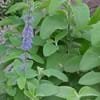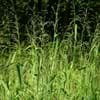Life Span
Annual
Perennial
Origin
North America, South America, Europe, Southern Africa, Asia
Southern Europe
Types
Hulled Barley, Hulless Barley, Barley Grits
Not Available
Number of Varieties
Not Available
Habitat
Humid climates
Cultivated Beds, Dappled Shade, Shady Edge, Sunny Edge, Woodland Garden
USDA Hardiness Zone
Not Available
6-9
AHS Heat Zone
Not Available
9-5
Sunset Zone
Not Available
4, 5, 6, 7, 8, 9, 10, 11, 12, 13, 14, 16, 17, 18, 19, 20, 21, 22, 23, 24
Habit
Not Available
Spreading
Minimum Height
Not Available
Flower Color
Not Available
White, Pink
Flower Color Modifier
Bicolor
Bicolor
Fruit Color
Brown, Gold
Brown
Leaf Color in Spring
Green, Light Green, Blue Green, Gray Green
White, Light Green
Leaf Color in Summer
Light Green
White, Light Green
Leaf Color in Fall
Not Available
White, Light Green
Leaf Color in Winter
Not Available
Light Green
Leaf Shape
Grass like
Oval
Plant Season
Not Available
Spring, Summer, Fall
Sunlight
Full Sun
Partial Sun, Partial shade
Type of Soil
Loam, Sand
Clay, Loam, Sand
The pH of Soil
Not Available
Acidic, Neutral
Soil Drainage
Well drained
Poorly Drained
Bloom Time
Spring, Summer
Summer
Tolerances
Drought
Drought
Where to Plant?
Ground
Container, Ground, Pot
How to Plant?
Seedlings
By dividing rhizomes, tubers, Stem Cutting
Plant Maintenance
Medium
Medium
Watering Requirements
Requires watering in the growing season
Average Water Needs, Do Not over Water, Requires regular watering
In Summer
Lots of watering
Lots of watering
In Spring
Moderate
Moderate
In Winter
Average Water
Average Water
Soil pH
Not Available
Acidic, Neutral
Soil Type
Loam, Sand
Clay, Loam, Sand
Soil Drainage Capacity
Well drained
Poorly Drained
Sun Exposure
Full Sun
Partial Sun, Partial shade
Pruning
Do not prune during shooting season
Prune in the growing season, Remove damaged leaves, Remove dead branches, Remove dead leaves
Fertilizers
All-Purpose Liquid Fertilizer
All-Purpose Liquid Fertilizer, Fertilize in early spring
Pests and Diseases
Red blotch
Red blotch
Plant Tolerance
Drought
Drought
Flowers
Not Available
Yes
Flower Petal Number
Single
Single
Edible Fruit
Not Available
No
Fragrant Bark/Stem
No
Yes
Foliage Texture
Fine
Medium
Foliage Sheen
Matte
Matte
Invasive
Sometimes
Sometimes
Attracts
Not Available
Bees, Butterflies, pollinators
Allergy
Abdominal pain, breathing problems, Eczema, Headache, Itchiness, Red eyes, Runny nose, Sinuses, sneezing, Sore eyes, Watery eyes, wheezing
Itchiness, Skin rash, Stomach pain, Swelling
Aesthetic Uses
Not Used For Aesthetic Purpose
Bonsai, Showy Purposes
Beauty Benefits
Not Available
Good for skin
Environmental Uses
Air purification
Air purification
Medicinal Uses
Asthma, Bronchitis, Diabetes, Diarrhea
Antiseptic, Digestive disorders, Fever, Headache
Part of Plant Used
Seeds
Fruits, Leaves
Other Uses
Used As Food, Used in making beverages
Added to salads, Used as essential oil, Used in making tea, Used to make herbal teas
Used As Indoor Plant
No
Yes
Used As Outdoor Plant
Yes
Yes
Garden Design
Cutflower, Dried Flower/Everlasting, Edible, Wildflower
Bog Garden, Edible, Groundcover, Herb / Vegetable
Botanical Name
HORDEUM vulgare
MENTHA suaveolens 'Variegata'
Common Name
Barley
Applemint, Variegated Applemint
In Hindi
जौ
Applemint Tree
In German
Gerste
Applemint Baum
In French
orge
Applemint Arbre
In Spanish
cebada
Árbol Applemint
In Greek
κριθάρι
Applemint Δέντρο
In Portuguese
cevada
Árvore applemint
In Polish
jęczmień
Applemint Drzewo
In Latin
hordei
Applemint ligno
Phylum
Magnoliophyta
Magnoliophyta
Class
Liliopsida
Magnoliopsida
Clade
Angiosperms, Commelinids, Monocots
Angiosperms, Asterids, Eudicots
Subfamily
Pooideae
Faboideae
Number of Species
Not Available
Not Available
Importance of Barley and Applemint
Want to have the most appropriate plant for your garden? You might want to know the importance of Barley and Applemint. Basically, these two plants vary in many aspects. Compare Barley and Applemint as they differ in many characteristics such as their life, care, benefits, facts, etc. Every gardener must at least have the slightest clue about the plants he wants to plant in his garden. Compare their benefits, which differ in many ways like facts and uses. The medicinal use of Barley is Asthma, Bronchitis, Diabetes and Diarrhea whereas of Applemint is Antiseptic, Digestive disorders, Fever and Headache. Barley has beauty benefits as follows: Not Available while Applemint has beauty benefits as follows: Not Available.
Compare Facts of Barley vs Applemint
How to choose the best garden plant for your garden depending upon its facts? Here garden plant comparison will help you to solve this query. Compare the facts of Barley vs Applemint and know which one to choose. As garden plants have benefits and other uses, allergy is also a major drawback of plants for some people. Allergic reactions of Barley are Abdominal pain, breathing problems, Eczema, Headache, Itchiness, Red eyes, Runny nose, Sinuses, sneezing, Sore eyes, Watery eyes and wheezing whereas of Applemint have Itchiness, Skin rash, Stomach pain and Swelling respectively. Having a fruit bearing plant in your garden can be a plus point of your garden. Barley has showy fruits and Applemint has no showy fruits. Also Barley is not flowering and Applemint is flowering. You can compare Barley and Applemint facts and facts of other plants too.
